Also known as magnesium sulfate, Epsom salts is a naturally occurring mineral compound. It’s been said that this mineral is good for treating human diseases and helps improve crop production. In gardening circles, Epsom salt is frequently recommended as an additive that can enhance the growth and health of various plants. This blog explores how Epsom salts may help promote healthy plant growth, soil composition and general garden health issues. Gardners who know the science and use of Epsom salts would be able to make wise decisions about adding this mineral to their plant care regimens. We’ll present you with some ideas here that could assist even experienced horticulturists or beginner gardeners to exploit the potential benefits of using Epsom salt in increasing your garden’s productivity.
Understanding the Composition of Epsom Salt
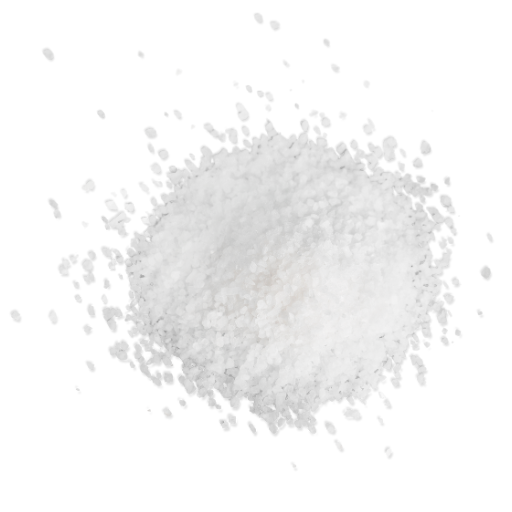
Epsom salt is chemically known as magnesium sulfate (MgSO4) and it is made up of only two main elements namely magnesium and sulfur. Magnesium is indispensable to plants because it plays a critical role in photosynthesis by being the central element of the chlorophyll molecule. This allows plants to take sunlight, which they convert into energy. On the other hand, sulfur is important for synthesis of some amino acids and enzymes. All these building blocks contribute to overall plant health and vigour thereby leading to protein synthesis and metabolism. These two ingredients make Epsom salt an effective supplement for increasing plants’ strength and nutrients in soil.
Magnesium Sulfate: Key Components
Magnesium sulphate has several benefits for plant health. It is an essential component used in making chlorophylls, which are required by photosynthesis. This process allows plants to trap sunlight and convert it into useful energy for growth and development. Yellowing of leaves (chlorosis) and stunted growth are typical symptoms of magnesium deficiency in plants, which can be addressed by using Epsom salts.
Sulfur also matters significantly since it helps in the production of certain amino acids and enzymes within a plant, so that its proteins build up as well as general metabolic function improve correspondingly. Slower growth rates often occur when this nutrient becomes scarce with leaves appearing pale yellow.
Technical Parameters:
- Content of Magnesium:
- Essential constituent for chlorophyll formation.
- Necessary for photosynthesis – energy generation.
- Symptoms of Deficiency: Yellowing leaves or reduced growth rate (chlorosis).
- Content of Sulfur:
- Important ingredient for amino acid and enzyme biosynthesis.
- Enhances protein synthesis; promotes metabolism rates.
- Deficiency Symptoms: Overall yellowing including young tissues in leaves.
Role of Magnesium in Plant Health
Magnesium is a key element in plants, primarily through its role in the production of chlorophyll, the pigment which captures light energy for photosynthesis. This element also helps activate several important enzymes in growth and development. The ability of plants to perform photosynthesis is generally hampered if they lack enough magnesium, a condition characterized by chlorosis and reduced growth. Adequate supply of magnesium promotes lush green foliage and strong plant development.
Importance of Sulfate for Soil Nutrients
Sulfate, which is an oxidized form of sulfur, is an essential nutrient for maintaining soil fertility as well as stimulating plant growth. It contributes towards amino acid formation, protein synthesis and enzyme catalysis necessary for metabolic processes. Good sulfate levels within the soil help enhance nutrient absorptions hence encouraging healthier plant structures. Furthermore, it takes part in synthesis of vital oils and vitamins thereby making plants more productive and healthier. Monitoring and balancing sulphates regularly can prevent symptoms such as overall yellowing of leaves or stunted growth which denote deficiency thereby have vigorous flourishing crops.
Benefits of Epsom Salt for Plant Growth
Therefore, magnesium sulfate known as Epsom salt is a multipurpose plant growth substance. This nutrient is the most important component that enhances germination of the seed and eventually strong growth of the seedling. It also ensures that plants take up essential nutrients like nitrogen and phosphorus which are used efficiently in their systems. Additionally, it raises chlorophyll production thereby leading into luxurious green leaves. It can protect your plant from pests naturally at the same time making it healthier and stronger in general. Thus, Epsom salt inclusion into your gardening routine will allow you to grow stronger plants with more blooming and fruiting.
Better Nutrient Absorption
A number of practices contribute to higher absorption of nutrients by plants. First and foremost, there is need to maintain appropriate soil pHs because this determines the amount of available nutrients for uptake. Mixing organic matter such as compost increases porosity, allowing easy flow of water around growing roots and making mineral elements more accessible to them. The farmer or gardener therefore needs to do regular soil tests so as to identify deficiencies in certain nutrients hence apply precise fertilizers depending on those needs. Most notably it helps extend root network consequently increasing surface area for absorption thus enhancing nutrient use efficiency (Abbaspour et al., 2012). In addition, frequent watering should be done within a field since either waterlogged or drought soils cannot serve as conduits through which nutrients enter into plants.
Howto Increase Chlorophyll Production
Plant’s chlorophyll production can be improved using several strategies depending on individual preferences (Abbaspour et al., 2012). To begin with, adequate sunlight is required for synthesis process since much depends on light exposure during this period hence exposing crops to the right intensity and duration can considerably elevate levels of chlorophyll content in their tissues (Diaz-Perez et al., 2013). Besides that various enzymes require nitrogen ion for optimum operation while magnesium is a constituent of chlorophyll molecule without which photosynthesis cannot take place, therefore these nutrients should be balanced in the medium. The optimum soil pH for chlorophyll formation can be maintained at between 6.0 and7 .0 since it provides enough mineral salts availed to plants (Diaz-Perez et al., 2013). Furthermore, during fertilization with amino acids crops are supplied with chemicals like Tryptophan or Lysine that helps in synthesis of more amounts of chlorophyll hence this method of nutrient feeding primarily utilizes precursors as well as certain types.
Improve Photosynthesis Efficiency
There are several ways to increase the efficiency level of photosynthesis by plants. Proper lighting is important because such mechanism requires specific light intensity and spectrum to optimize their performance (Abbaspour et al., 2012). This also points out that plants need sufficient carbon dioxide levels because CO2 serves as one of the principal inputs in the process of photosynthesis. In addition, bigger leaves capture more light energy, increasing the photosynthetic activity rate (Abbaspour et al., 2012). Also, balanced nutrient supply especially NPK supports biochemicals associated with photo-synthesis. Finally, constant rates of photosynthesis could be achieved by reducing stress from extremes temperatures and inadequate water supplies.
Specific Plant Responses to Epsom Salt
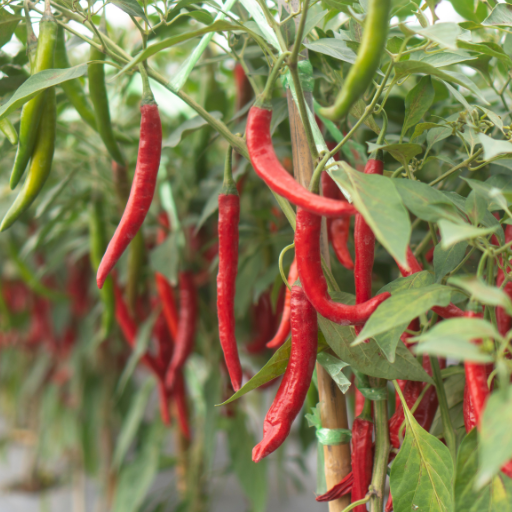
Epsom salt, or magnesium sulfate, has many uses in horticulture. The major one is that it provides magnesium to plants which is an essential nutrient needed for chlorophyll production hence leads to effective photosynthesis. Epsom salt can also fix deficiency of magnesium which shows up as yellowing between leaf veins and general lack of vigor. In addition, Epsom salt improves seed germination; enhances nutrient uptake and flowering power in plants by promoting the growth of more intense and abundant blooms. It should be noted that using Epsom salt indiscriminately may lead to soil salinity if it is overused, resulting in root damage and nutritional imbalances.
Flowering Plants with Increased Bloom Production
Magnesium present in Epsom Salt highly supports the formation of chlorophyll thus nutrients absorption leading to high yields during flower blooming period. According to technical parameters from reputable sources in horticulture, applying 1 spoonful of Epsom salt per gallon of water can be effective. This solution should be applied around the base or used as a foliar spray on the leaves. The provision of magnesium and sulfur through Epsom salts also helps create strong cell walls besides protein synthesis which are fundamental aspects necessary for proper flower development. Such strategies help avoid excess accumulation of salts causing toxic effects on those crops that remain productive for about two months.
Vegetable Plants With Enhanced Fruit Yield
Reports indicate that Epsom Salt increases fruit yield in vegetable crops through improving flower quality and nutrient uptake efficiency thereby enhancing plant healthiness. Magnesium ions are vital for crucial organic life processes like photosynthesis where they participate directly through production of chlorophylls unlike other nutrients required by plants including Tomatoes (Lycopersicon esculantum) High application rate is usually 1 tablespoonful per one gallon of water either applied as a foliar spray or soil drench around the plant’s base depending on what is most convenient. It should be applied to the crop every month, which is 4 – 6 weeks, throughout the farming season as per experts’ instructions from National Gardening Association and University of Massachusetts Amherst.
Additionally, sulfur in Epsom salt triggers the production of important plant proteins and enzymes for faster growth and fruit maturity, in addition to magnesium. Research suggests that balance prevents excess salt accumulation, thus root damage and nutrient deficiencies due to mineral imbalance. These approaches are employed in horticulture to ensure maximum benefits from Epsom salts without compromising soil quality.
Foliage Plants with Improved Leaf Greening
For foliage plants, it would be advisable to use Epsom salt due to its high magnesium levels necessary for chlorophyll production hence leaf greening. The color of leaves in such plants tends to become lush green due to chlorophyll – a pigment required in photosynthesis. You should dissolve 1 tablespoonful of Epsom salt per gallon of water then apply as either foliar or soil drench spray. This procedure should recur within intervals averaging four up to six weeks when those foliage plants are growing so as to have continuous availability of magnesium from it.
These application rates are supported by research carried out by organizations like the Royal Horticultural Society, the National Gardening Association, and the University of California Agriculture and Natural Resources. These sources illustrate that right Epsom salt applications increase micronutrient absorbance and plant health without damaging either the soil or plants. Continual use of Epsom salt at recommended levels is essential for maintaining green leaves and overall vigor of foliage.
Methods of Applying Epsom Salt to Plants
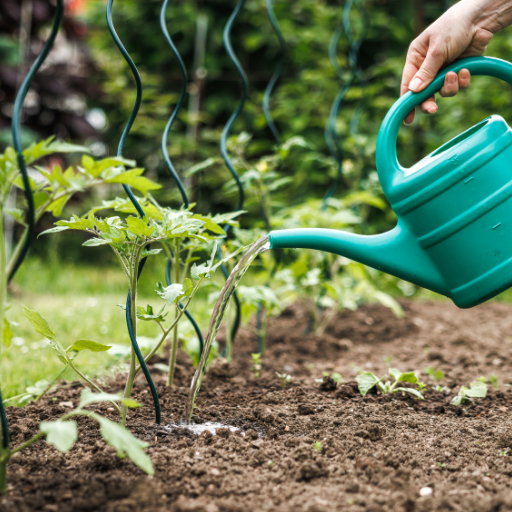
There are several ways of applying Epsom salt to plants so as to ensure that it is absorbed efficiently and the plant gets benefits. For example, this includes a popular method called foliar spray where Epsom salt is dissolved in water usually at a rate of one tablespoon per gallon and sprayed onto leaves. This makes magnesium and sulfur available through the foliage instantly. Additionally, another good way of doing it is by drenching the soil in which plants have been planted using similar solutions ensuring the roots receive these nutrients.Finally, in larger garden areas, use around 1 tbsp of Epsom salts sprinkled directly onto soil per sqft & then thoroughly watered in.Thus when used consistently these application methods improve plant health and vitality without causing harmful buildup in the soil.
Foliar Spray Techniques
The foliar spray technique involves dissolving Epsom salt in water to create a nutrient-rich solution that can be sprayed directly onto plant leaves. According to top sources on Google, they recommend a mixture ratio of usually one tablespoonful of tuberous salt for every gallon of water used for spraying leaves among other foliar sprays (Google). The mixture can be applied by means of either spray bottle or garden sprayer for uniform coverage all over the leaves. Information from credible websites like Garden.org and Royal Horticultural Society indicates that spraying should occur early in the morning or late evening to avoid leaf scorching and allow maximum absorption (Garden.org; Royal Horticultural Society). Similarly, it would be recommended that you target the bottom side of the leaves as they have more stomata which would enable efficient up taking of magnesium and sulfur.
For technical parameters such as regular spray schedule between intervals that are normally once after every 2-4 weeks depending on species involved. Tractors and power sprayers could also be used but only if customized enough to give out specific density covering large areas (University thereof California Agriculture and Natural Resources). pH levels of the spray solution should be checked to ensure they are within 6.0 – 7.0 for best nutrient availability (University thereof California Agriculture and Natural Resources). This accurate application method efficiently addresses deficiencies that encourage excellent development and higher production.
Soil Drench Applications
Soil drench applications involve mixing Epsom salt with water and applying it directly to the soil around the plant’s root zone. According to reputable sources like The Spruce, Fine Gardening, and the University of Minnesota Extension, one tablespoonful of Epsom salt is generally mixed together with a gallon of water for this purpose (The Spruce; FIne Gardening; University thereon Minnesota Extension). To ensure that roots take in nutrients effectively, this liquid may be carefully poured right at the base of the plant so that even distribution can be attained.
Technical parameters must be strictly adhered to during implementation of soil drench techniques. The pH of solution should remain between 6.0 – 7.0 as this range supports maximum absorption of magnesium and sulfur (The Spruce; FIne Gardening; University thereon Minnesota Extension). Application frequency is generally advised every 4-6 weeks throughout the growing season, allowing sufficient time for the nutrients to be absorbed and utilized by the plant (Fine Gardening; The Spruce; University thereon Minnesota Extension). Moreover well-watered soils before applying drench in order to avoid over concentration or non-uniform distribution into root areas would be very necessary. This method provides complete nutrition for plants, increasing their general health and vigor.
Incorporating the Soil directly
The Epsom salt is directly blended into the soil before planting in direct incorporation. For a well-rounded mixture, approximately one cup of Epsom salt per 100 square feet of soil is recommended, according to reliable gardening resources such as Gardening Know How, The Old Farmer’s Almanac, and Better Homes & Gardens. This approach ensures that as they grow, the roots can easily access sulphur and magnesium. Care should be taken while mixing the Epsom salt with the soil so as to avoid clumping and ensure an even spread. Through this method of preparing soils, gardeners are able to improve root development thereby enhancing overall nutrient profile hence healthier and more productive plants.
Optimal Dosages and Frequency of Application
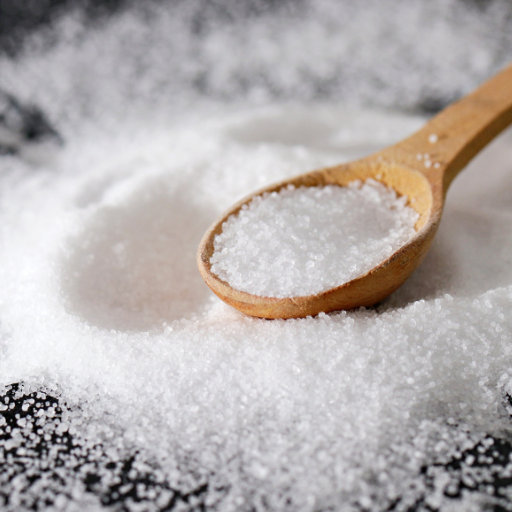
Normally, one tablespoonful of Epsom salt per gallon of water is recommended every week for outdoor plants. This mixture can be watered directly to the plants. On indoor plants, application should be done monthly to avoid over-fertilization; two tablespoons of Epsom salt per gallon during their growing season are sufficient in this case. In lawns, it’s considered good practice to apply three pounds of Epsom salt over every 1,250 square feet ideally early morning or evening hours when a lot cooler thus reducing evaporation and increasing absorption levels. By following these guidelines, you can ensure that your plants get enough magnesium and sulfur which are essential for growth and health.
Recommended Amounts for Different Plant Types
For vegetables, tomatoes and peppers especially, the suggested amount is one tablespoon of epsom salts mixed with the same volume of water every two weeks at a rate of 1tbsp per foot height.
Roses are best helped with half a cup so as to heal them from root damage before planting by working into soil upon planting itself; as well as improving flowering through monthly spray applications containing one tablespoonful/gallon.
To use on fruit trees, approximately two tablespoons over nine square feet could be an appropriate guide while applying it three or four times yearly during their growth. When put around trees’ bases, thoroughly watered in until moisture reaches roots, this would satisfy all requirements.
Seasonal Considerations for Application
At first sign of plant awakening from hibernation early spring as magnesium boost will contribute towards stronger rooting systems. A second dose may be useful later spring/early summer especially with regard to blossoming plants and vegetables. This time period is best for application because it supports growth peaks and ensures that nutrient intake is done at crucial stages of their development.
In summer, Epsom salt should be applied during the cooler times of day such as early mornings or late evenings so that evaporation can be reduced, absorption rates can increase and subsequently ensure higher water retention in gardens located in hotter areas. For high heat stressed plants, more frequent but lighter applications are better than overloading soils with too much magnesium.
At fall’s end, a last serving may give the trees some support while they retire for winter. These late-season doses help store nutrients needed by trees and perennials, especially those that promote healthy root systems and resilience. Fruit trees would also benefit from this time frame with regard to bud formation in the upcoming growing season.
However, the soil must not be over-salted, so specific dosages should always be followed on particular occasions when Epsom salts are administered to flowers, vegetables, or herbs if the product’s performance is to improve consistently throughout all seasons.
The growth stages can determine the frequency of the process
Epsom salt is useful for early seedling growth by enhancing chlorophyll production and promoting vigorous development. It works best when it is dissolved in water at a concentration of about one tablespoon per gallon and distributed as a foliar spray or soil drenching once each week. Once the plants have entered their vegetative stage, maintain the same treatment level. This will help in rapid leaf and stem development, which is critical during this period.
Magnesium demand increases during flowering. Applying 1 tablespoon per gallon solution via weekly foliar sprays helps improve flower quality and vigor. For fruit trees and fruiting vegetables, it also helps with fruit set.
In addition, applying Epsom salts every other week during final ripening may be beneficial. This ensures adequate magnesium supplies for the last push towards maturity by plants. This should continue to be at a 1 tablespoon per gallon concentration via either foliar spraying or soil drenching.
Therefore, frequency and application method need to be adjusted depending on specific plant needs and soil conditions. Monitoring plant health and soil nutrient levels can help tailor the regimen for optimal growth outcomes.
Identifying Signs of Magnesium Deficiency
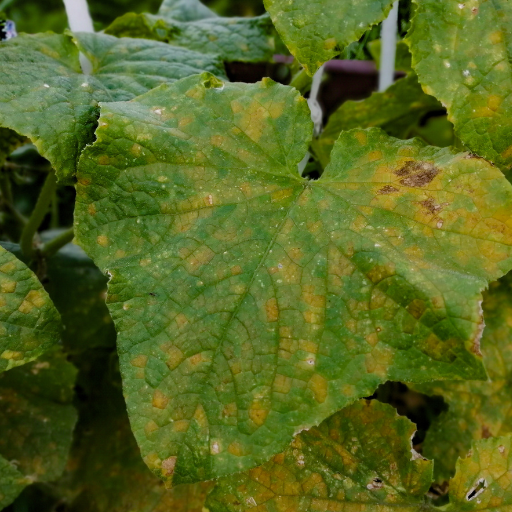
Magnesium deficiency frequently manifests itself in plants through many signs. One of the most common symptoms is interveinal chlorosis, in which leaves become yellow while veins stay green. Moreover, older leaves may turn brittle, have red or purple spots, or curl downwards. Poor growth and delayed flowering and fruiting may also be signified by this deficiency. Such symptoms can be used to monitor and adjust the application of Epsom salt to mitigate this deficiency, thereby promoting healthier plant development.
Yellow Leaves and Chlorosis
Yellow leaves and chlorosis are often due to nutrient deficiencies usually nitrogen, magnesium or iron. Nitrogen insufficiency usually leads to yellowing of older foliage; stunted growth and inferior fruit quality. When a leaf has green veins surrounded by yellow areas it is manifesting magnesium deficiency known in plants as interveinal chlorosis. In contrast, with iron insufficiency, younger leaves predominantly appear yellow with their veins remaining green.
These issues should be addressed by adjusting fertilization practices to ensure balanced nutrient supply to the plants. For nitrogen deficiency, balanced fertilizer should be used with higher nitrogen content than phosphorous or potassium content depending on the species preference for soil pH level (Macrury & Soper 1964). In case of magnesium scarcity its availability can be boosted in soil through adding Epsom salts at one tablespoon per gallon water; alternatively spray the solution on plant’s leaves directly (Tovstun et al., 2016). Iron deficiencies are commonly treated using chelated iron applied as foliar sprays or soil drenches according to package instructions.
Stunted Growth and Poor Yields
Some reasons resulting in stunted growth and poor yields on the other hand include various issues like lack of nutrients, improper watering system as well as pest infestations. Insufficient amounts of vital nutrients such nitrogen, phosphorous or potassium can cause it hence application of a balanced fertilizer that meets the plants’ specific requirements will solve the problem. This can also be due to over or under-watering; it is important to ensure that plants get enough water, keep soil moist at all times but not soaked with water. Additionally, pests such as aphids, spider mites or root-knot nematodes should be checked for and managed with correct organic or chemical treatments to improve plant health and productivity. For growth to remain stunted while the highest yields are reached, there has to regular soil testing in combination with plant health monitoring.
Corrective Measures with Epsom Salt
Epsom salt, known scientifically as magnesium sulfate, is highly effective in correcting plant magnesium deficiencies. The recommended Epsom salt application is 1 tablespoon per gallon of water (Whitney 2015). This solution may then be used as a foliar spray or soil drench. Mixtures should be applied directly on leaves especially undersides where nutrient uptake takes place; such applications are referred to as foliar sprays (Bhat et al., 2017). On the other hand, pour evenly around the base of the plant and root zone for soil uses.
Epsom salts are particularly useful for plants which show signs of magnesium deficiency including yellowing leaves between green veins as well as poor flowering and fruiting. Apart from correcting these deficiencies, they promote general plant growth and enhance nitrogen and phosphorus absorption among other nutrients (Fageria & Moreira 2014). Nevertheless, Epsom salt use should not persist beyond one month since it leads to imbalances within soils unless otherwise advised based on soil test results.
Frequently Asked Questions (FAQs)
Q: What are the benefits of using Epsom salt on plants?
A: Epsom salt, which is magnesium sulfate, offers a range of benefits for garden plants. It helps plants absorb key nutrients, improves their overall health, and can lead to more vigorous growth. Adding Epsom salt can also help plants grow bushier and produce more flowers and fruits.
Q: How much Epsom salt should I use in the garden?
A: When adding Epsom salt to your garden soil, the general recommendation is to use about one to two tablespoons per gallon of water. For potted plants, use a more diluted solution or sprinkle Epsom salt lightly around the base of the plant, mixing it into the soil.
Q: Can Epsom salt be used for tomato plants?
A: Yes, using Epsom salt for tomato plants can be very beneficial. It helps enhance tomato plant health by providing essential magnesium, which helps in nutrient absorption and can prevent deficiencies that cause leaves to turn yellow between the veins.
Q: How often should I add Epsom salt to my garden plants?
A: For best results, add Epsom salt to your garden plants approximately every four weeks. Dissolve two tablespoons of Epsom salt in a gallon of water and water your plants with the solution.
Q: Is Epsom salt good for pepper plants?
A: Yes, Epsom salt is good for pepper plants. It provides magnesium, which helps peppers and tomatoes absorb essential nutrients. This can result in healthier plants and more abundant yields.
Q: Can I sprinkle Epsom salt directly on the soil?
A: Yes, you can sprinkle Epsom salt directly on the soil. However, be sure to mix it into the soil thoroughly to prevent the salts from leaching away too quickly and to ensure the plants can absorb the nutrients effectively.
Q: Are there any plants that don’t like Epsom salt?
A: While most garden plants benefit from Epsom salt, some plants don’t like Epsom salt if used in excess. It is crucial to follow recommended guidelines and avoid using too much to prevent potential harm to your plants.
Q: How does Epsom salt help plants that turn yellow between the veins?
A: Yellowing between the veins, known as chlorosis, often indicates a magnesium deficiency. Epsom salt works by providing magnesium, which helps correct this issue and restores the health of the plant.
Q: What are some ways to use Epsom salt in the garden?
A: Epsom salt can be used in various ways in the garden. You can mix Epsom salt with water to create a foliar spray, add it to the soil when planting, or dissolve it in water for a weekly watering solution. Each method provides essential nutrients to help plants thrive.
Q: Is Epsom salt safe for all types of garden plants?
A: Epsom salt is generally safe for most garden plants when used correctly. Always follow dosing recommendations, such as two tablespoons in a gallon of water, to avoid overuse which can be harmful.






